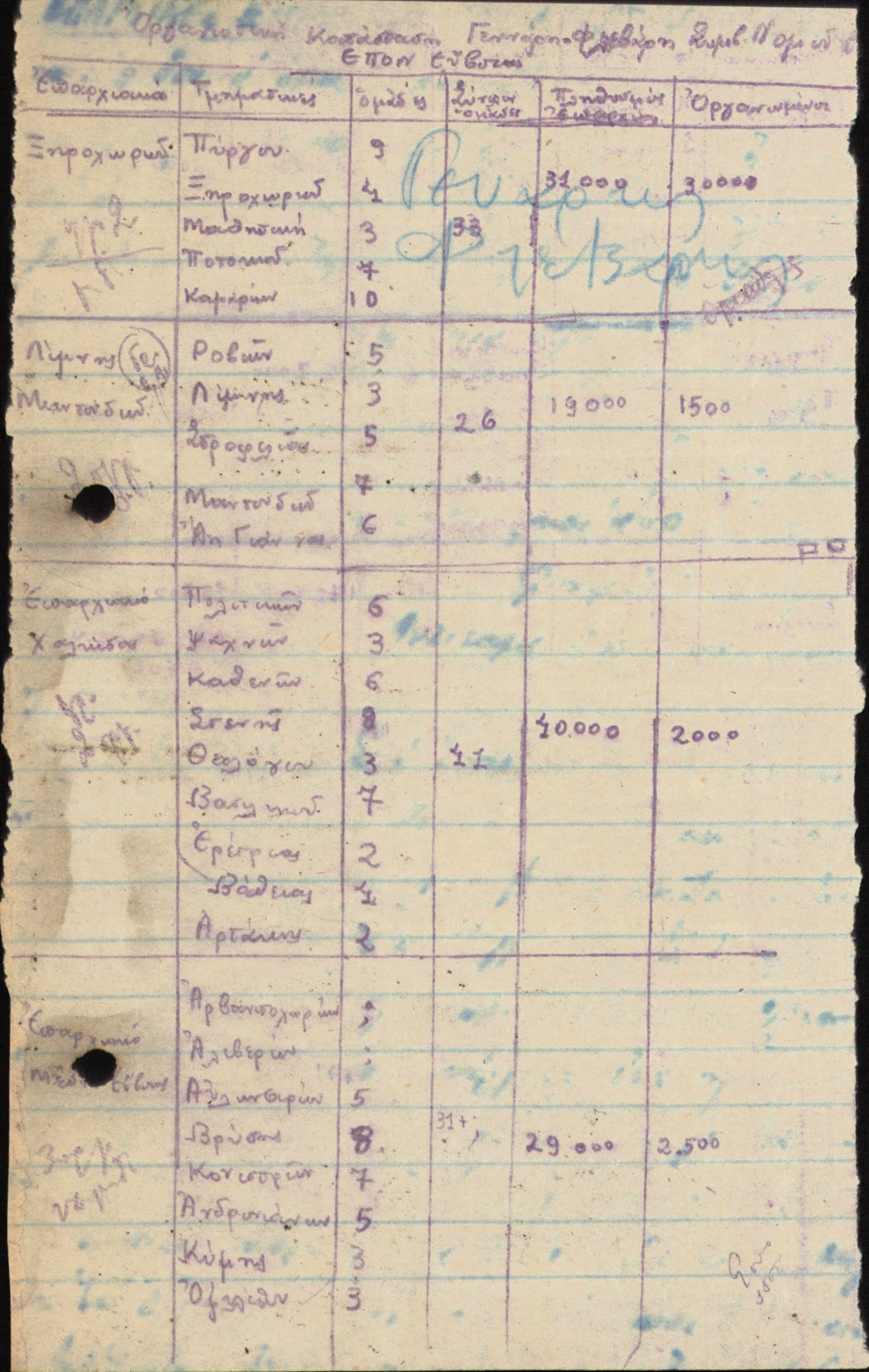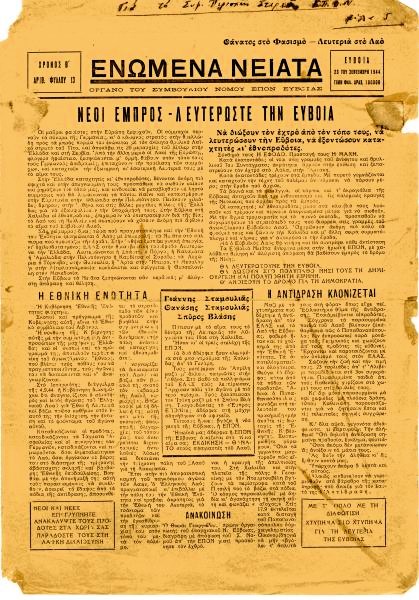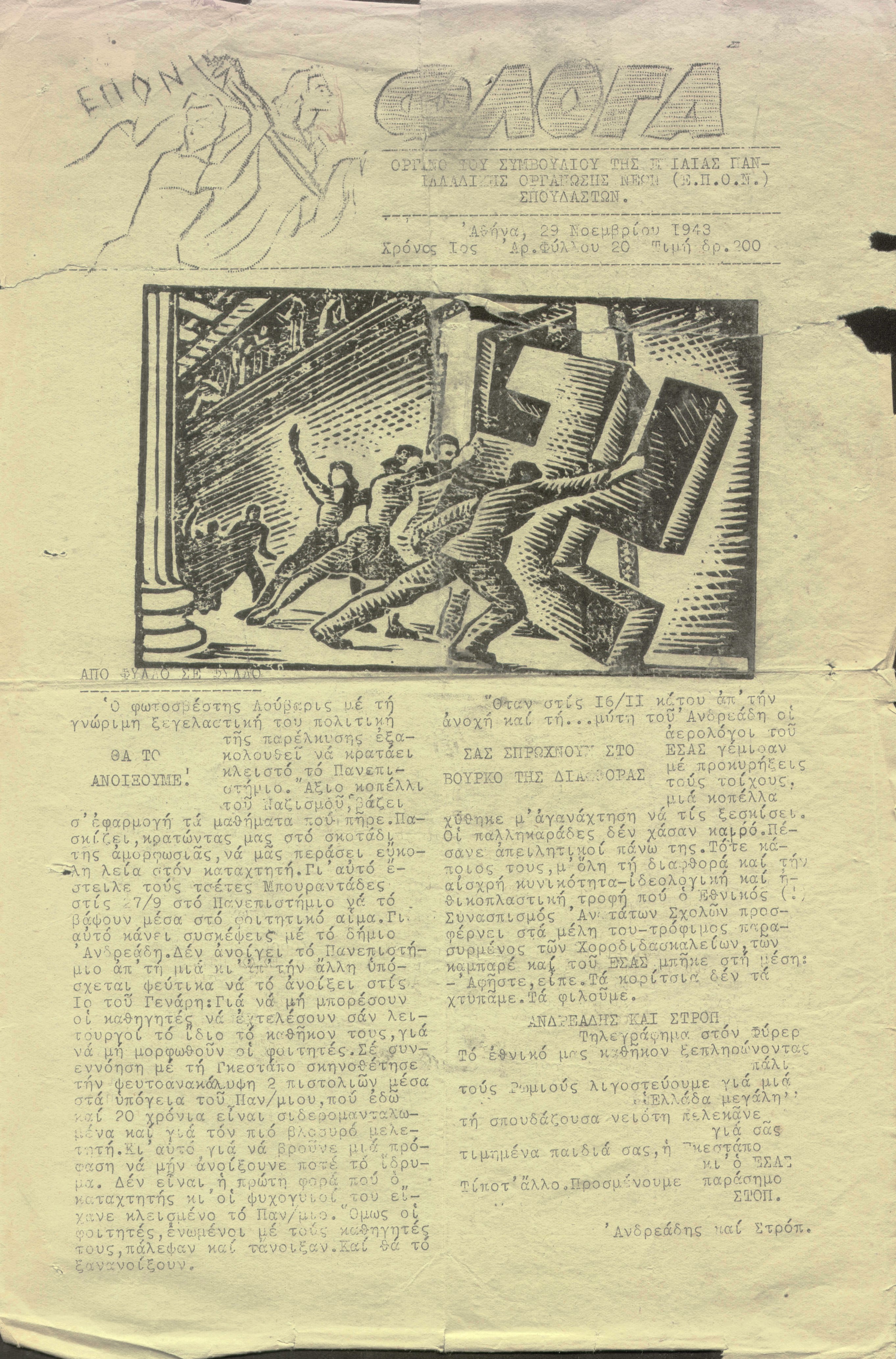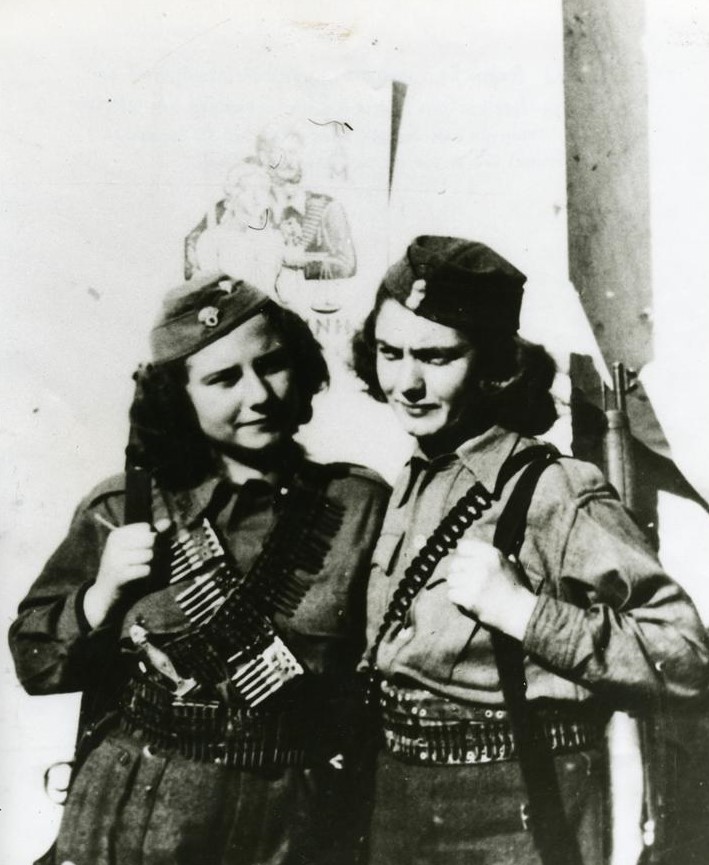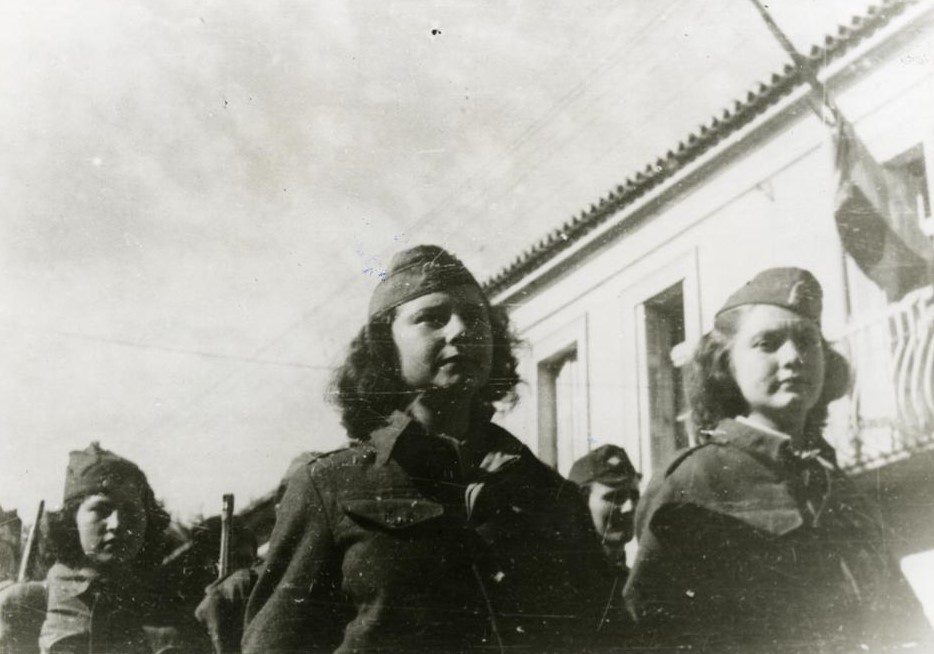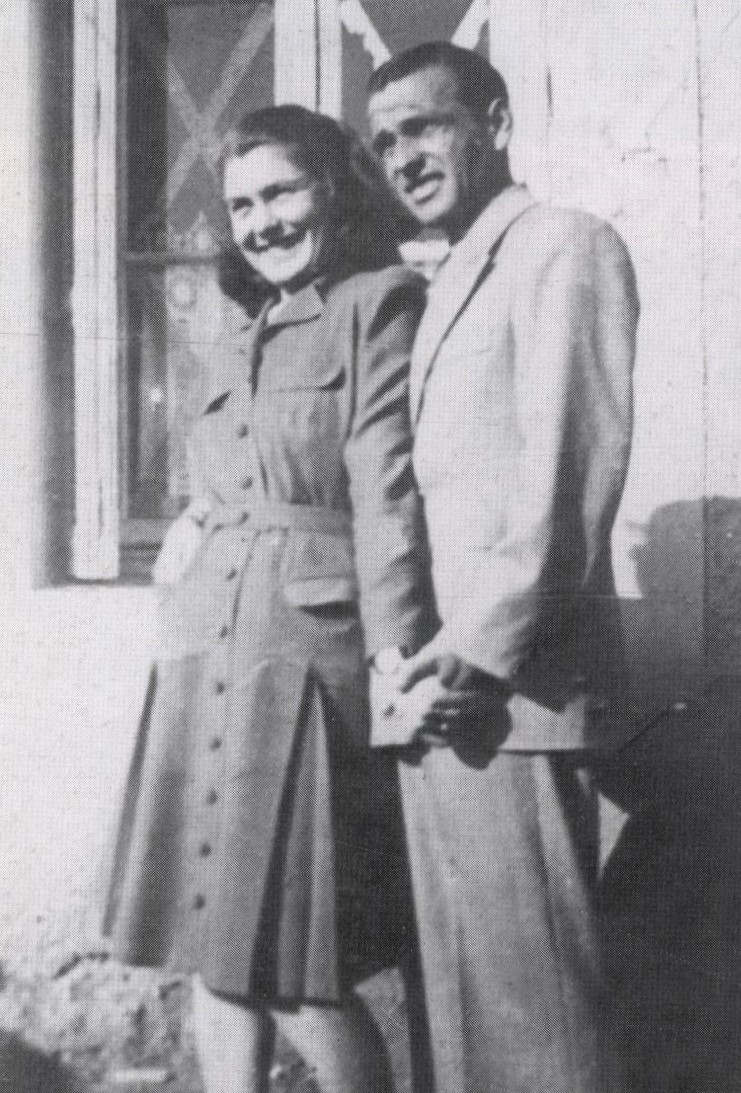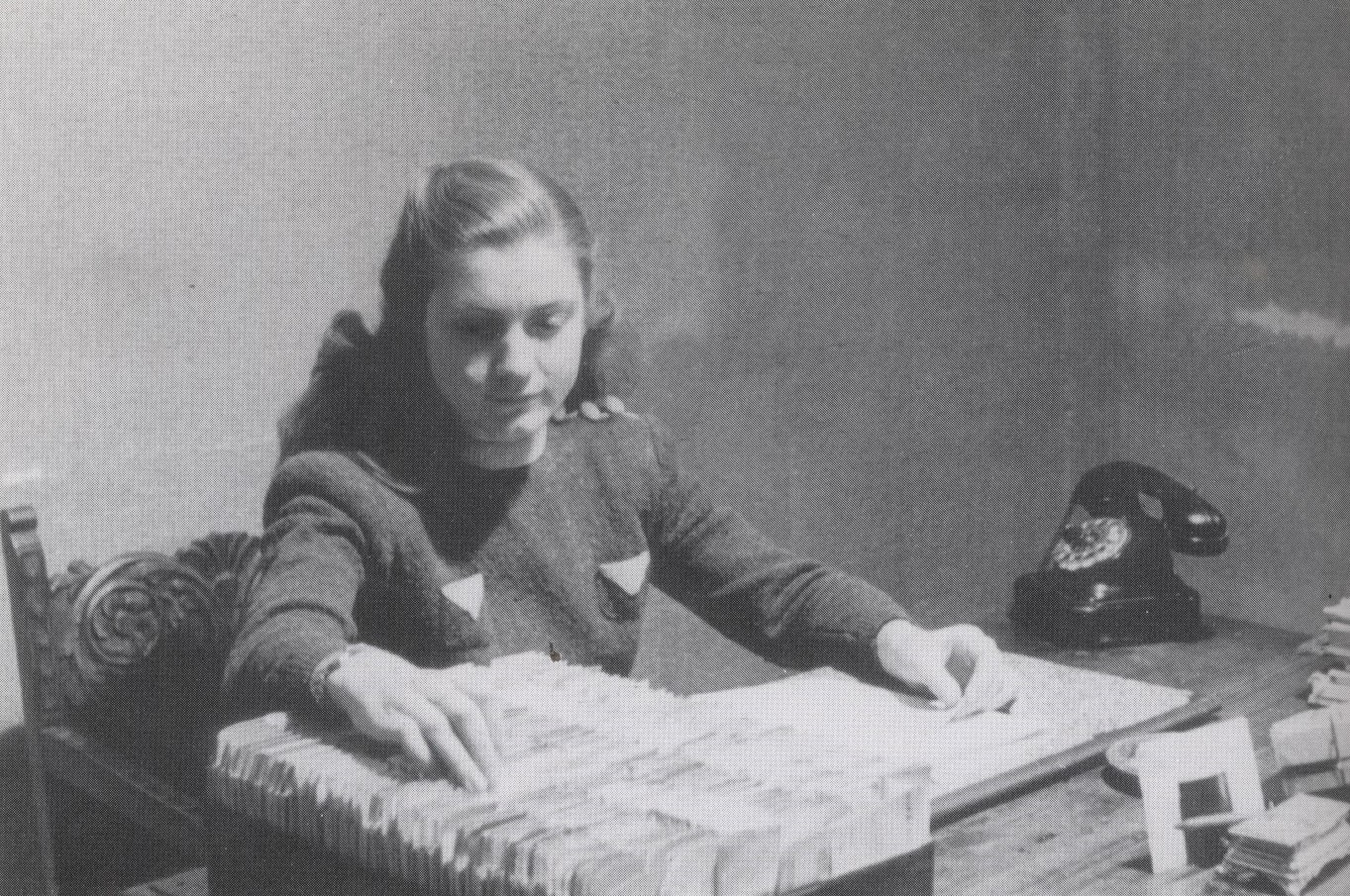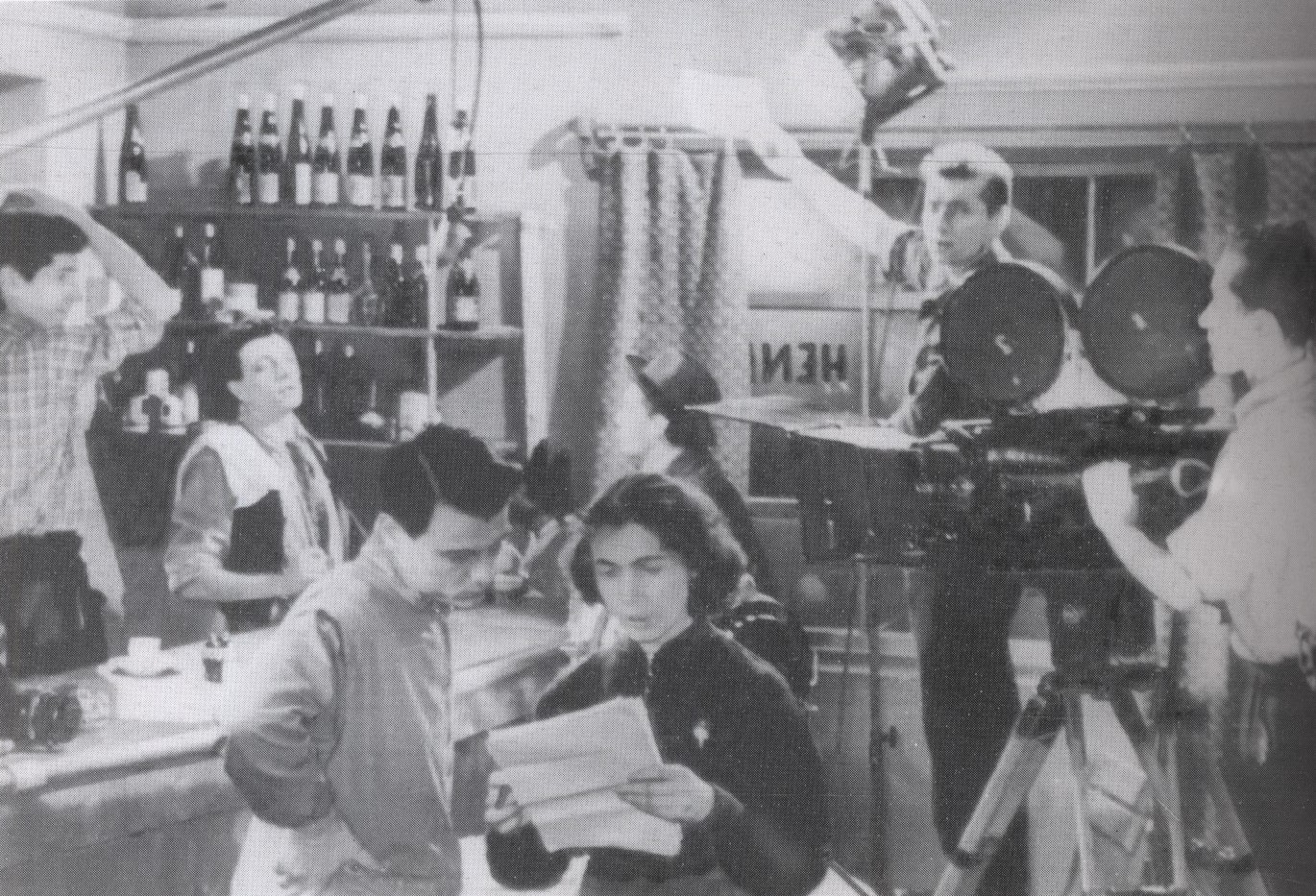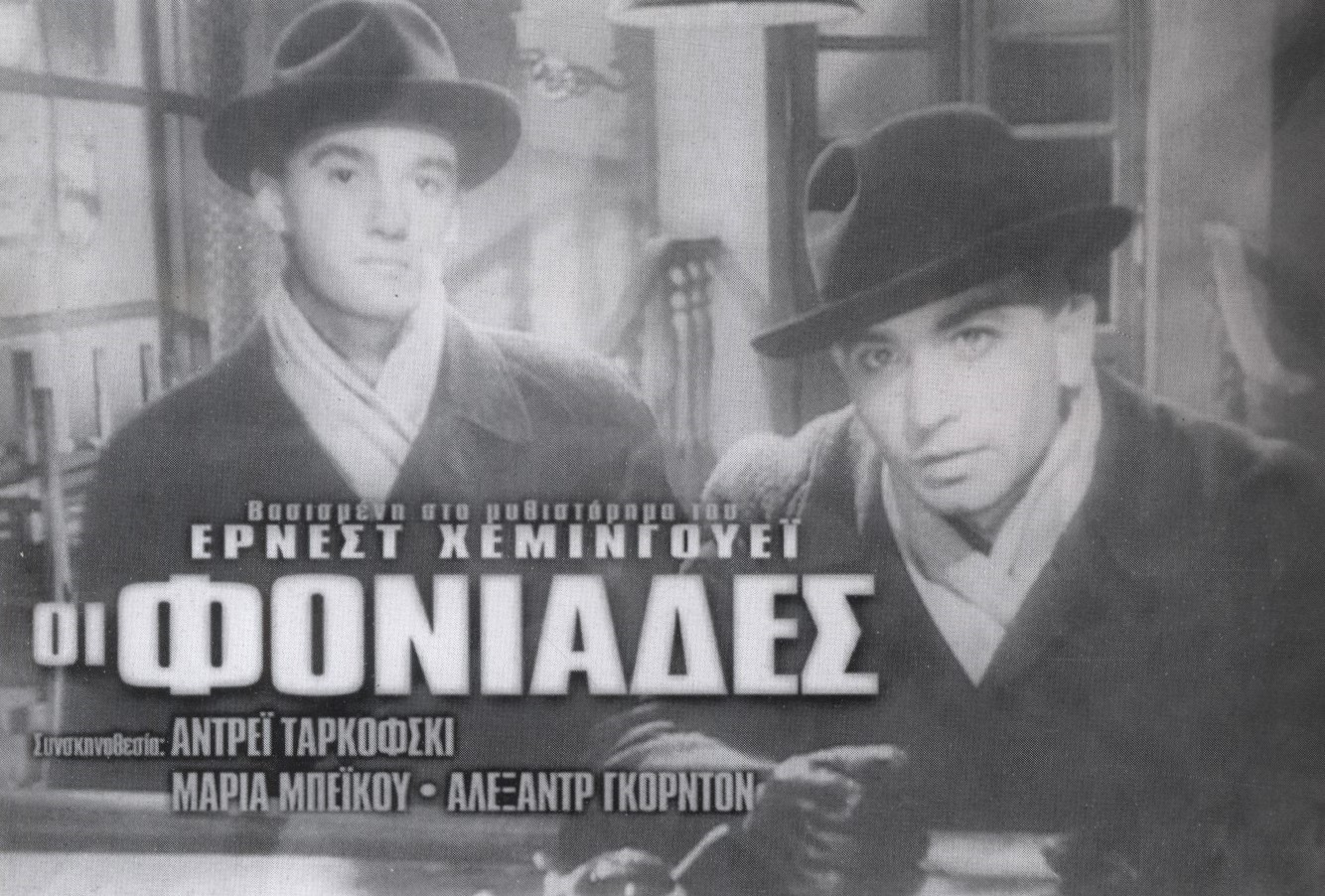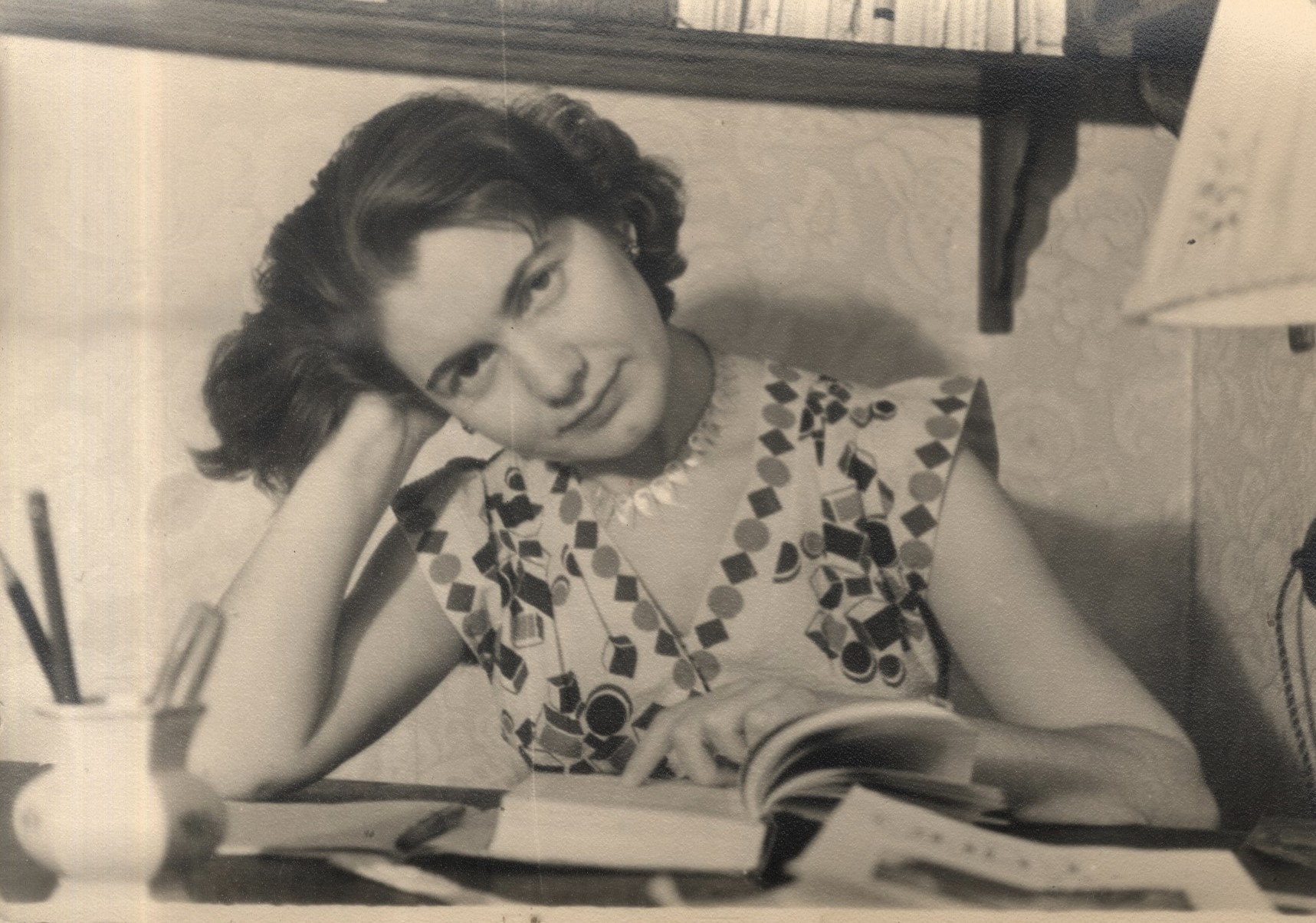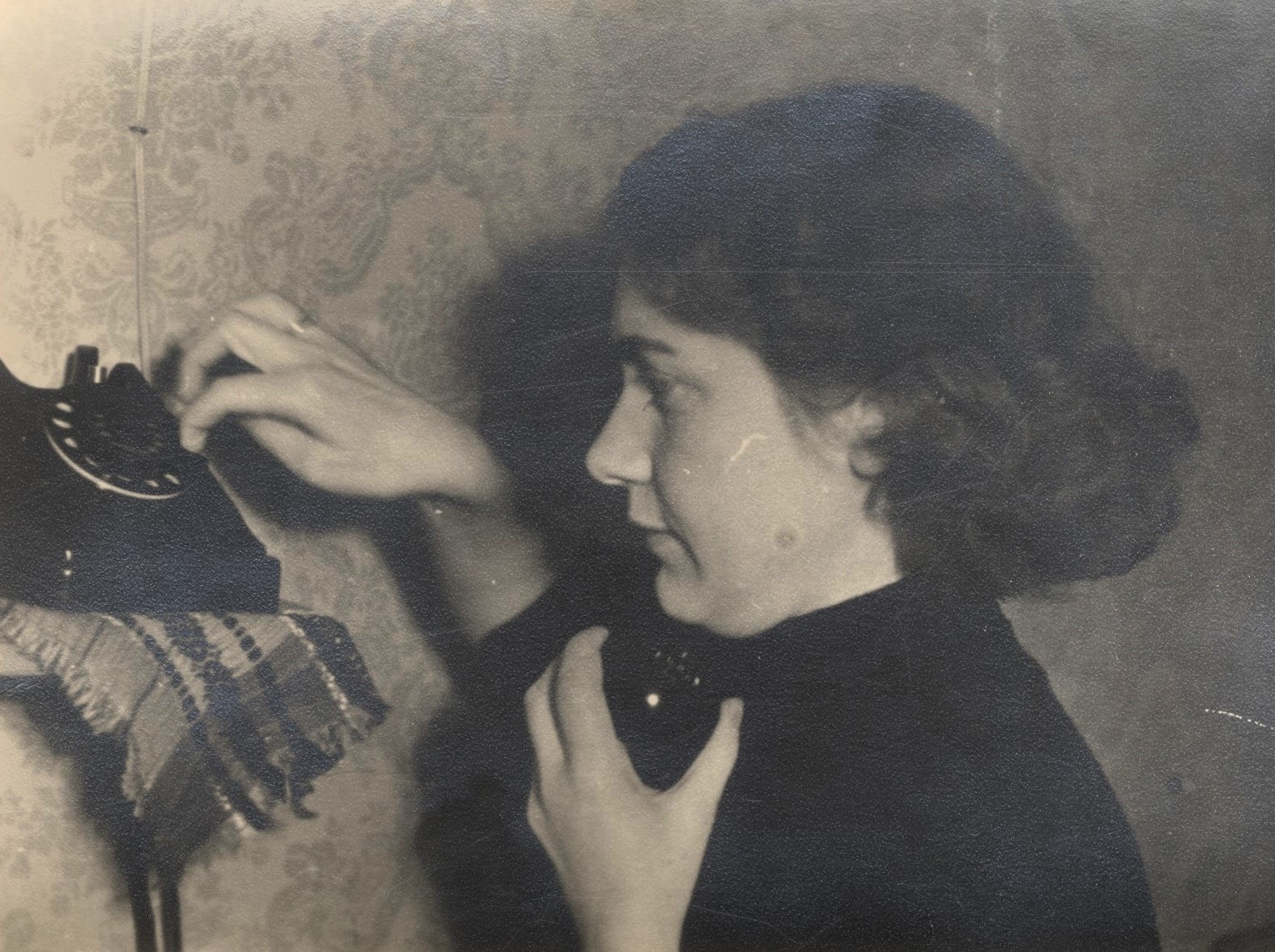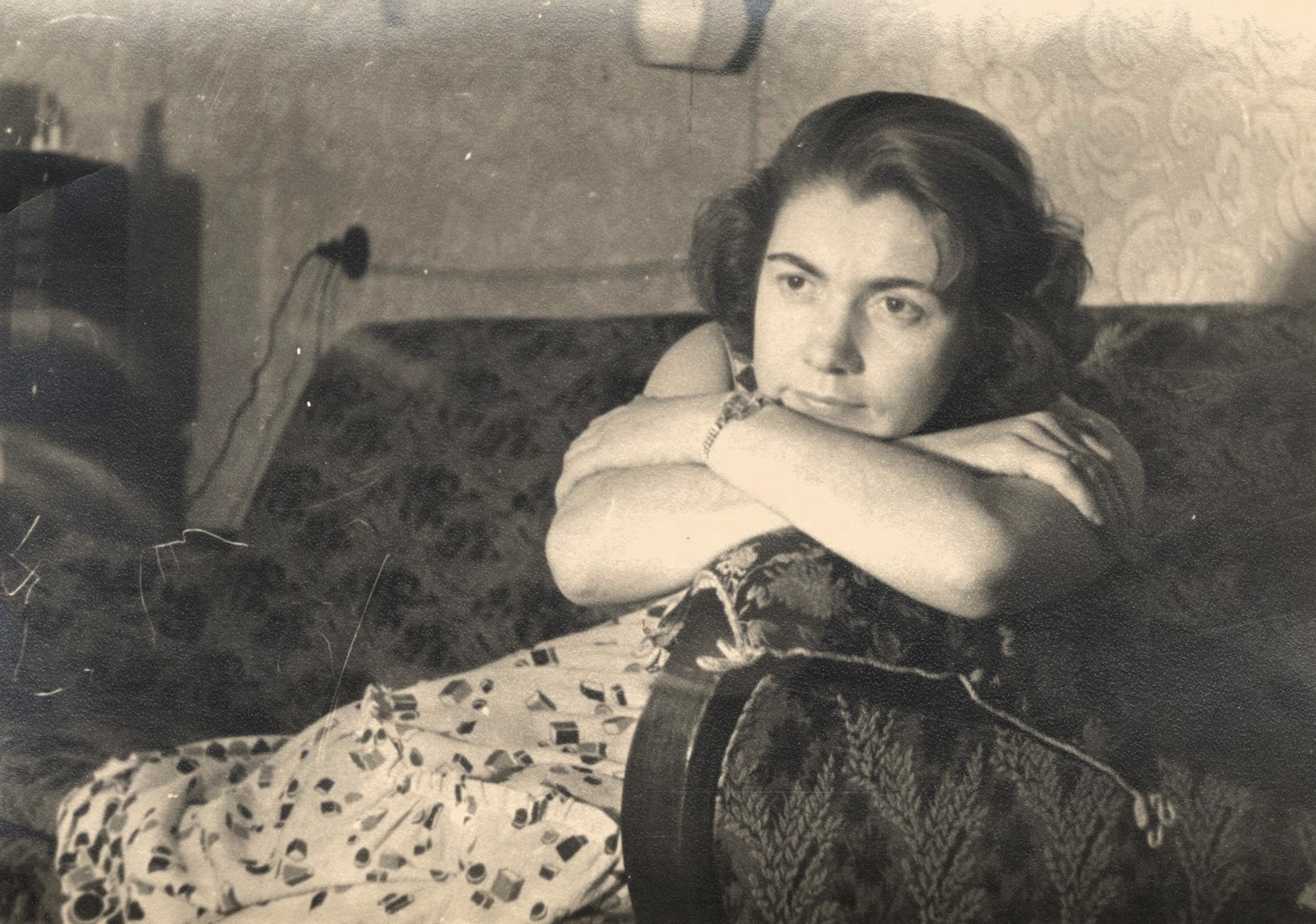War and Resistance
In high school she was forced to join the EON (the youth of the dictator Metaxas) and due to her brother’s illness –after missing a year of school– they became classmates. “So we found ourselves in the same classroom, playing Oedipus Tyrannus together, under his direction, he playing Oedipus and I playing his daughter, with our big scene where he proudly loosened my hair to make it golden in the sun…”. The Occupation finds them in high school. Maria initially joins the National Solidarity, helping the work of the first guerrilla groups with fundraisers, clothes, and supplies. In February 1943, after the founding of the United Panhellenic Youth Organization (EPON), the largest youth resistance organization, she immediately joined it, together with her brother.
«In Evia we also had clashes and we took part as EPON members, helping the armed forces. EPON had undertaken the enlightenment and above all the cultural sector. We listened to the radio stations at night and put out a bulletin every day. We were dropping the bulletins in people’s homes so they could find out what was going on in the world. (…) We wrote the bulletin on a typewriter and printed it on a polygraph. All illegal, of course. (…) We had the polygraph and the radio in our house, with my brother Giannis. It was dangerous, too dangerous, and we had to break the resistance of our parents”. The parents’ resistance was finally overcome by the persistence and commitment of their two children to the resistance struggle. “Then they helped us. They kept watch when we listened to the radio stations at night. We had a crypt in the yard where we hid the radio during the day”.
While working in the illegal organization, they left home in order to be safe. However, the organization decided that Maria should return home as they needed a contact person in the village. On her way back, she met a fellow villager who was suspected of collaborating with the occupation forces. This is quickly confirmed, since on the same day, the Italians raid her parent’s house –in the meantime Maria has fled to a neighbouring house– and arrest her father. They took him to the Chalkida Prison. He was released after Italy’s capitulation (Sept. 1943).

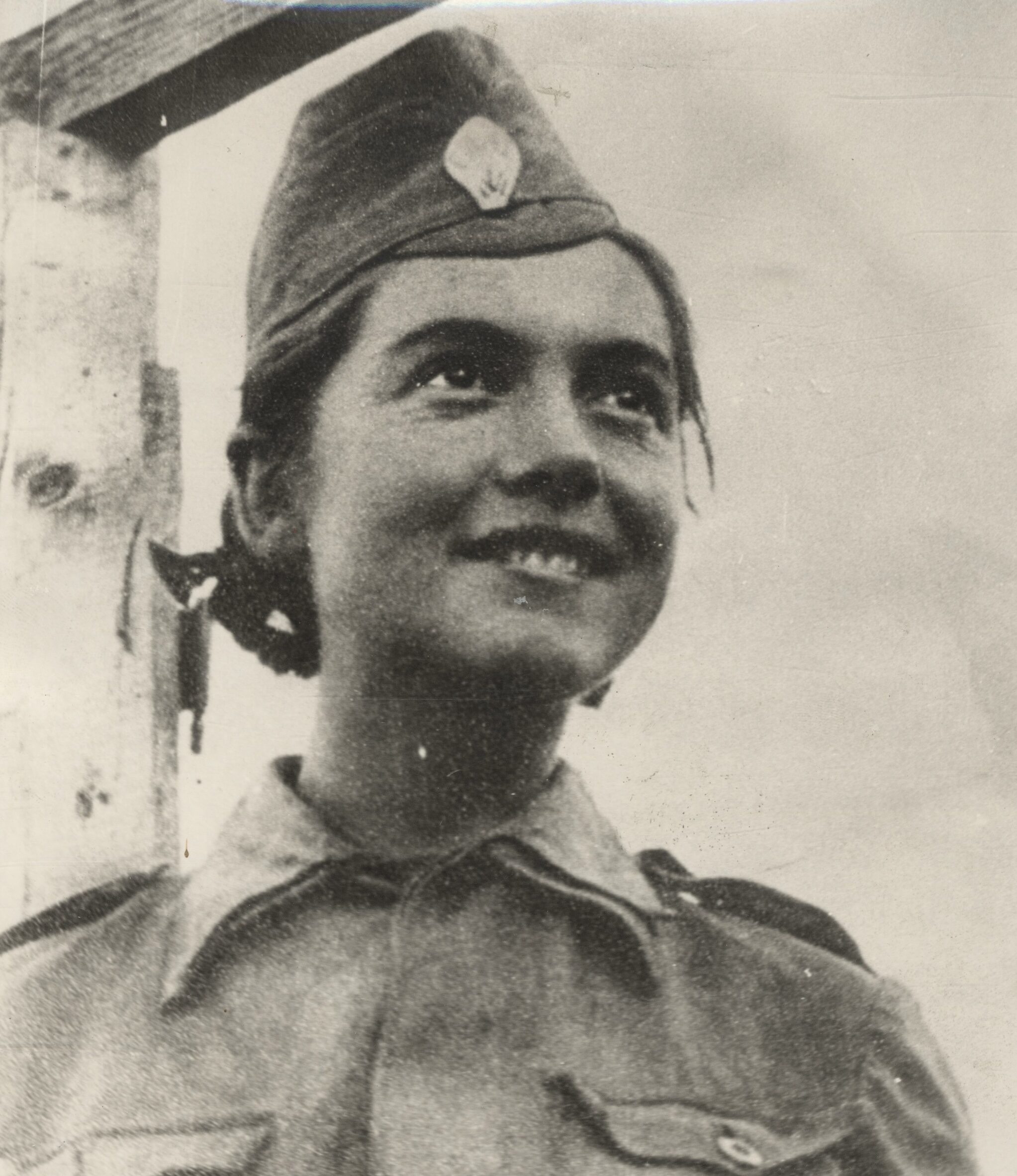
![The Greek resistance fighter and artist (1925-2011) Maria Ferla Beikou with her parents and siblings, Evia [1929-1930] (ASKI Library, Photographic insert of the book of Maria Beikou](https://aski.gr/wire/wp-content/uploads/2024/02/ASKI_Beikou_01.jpg)
